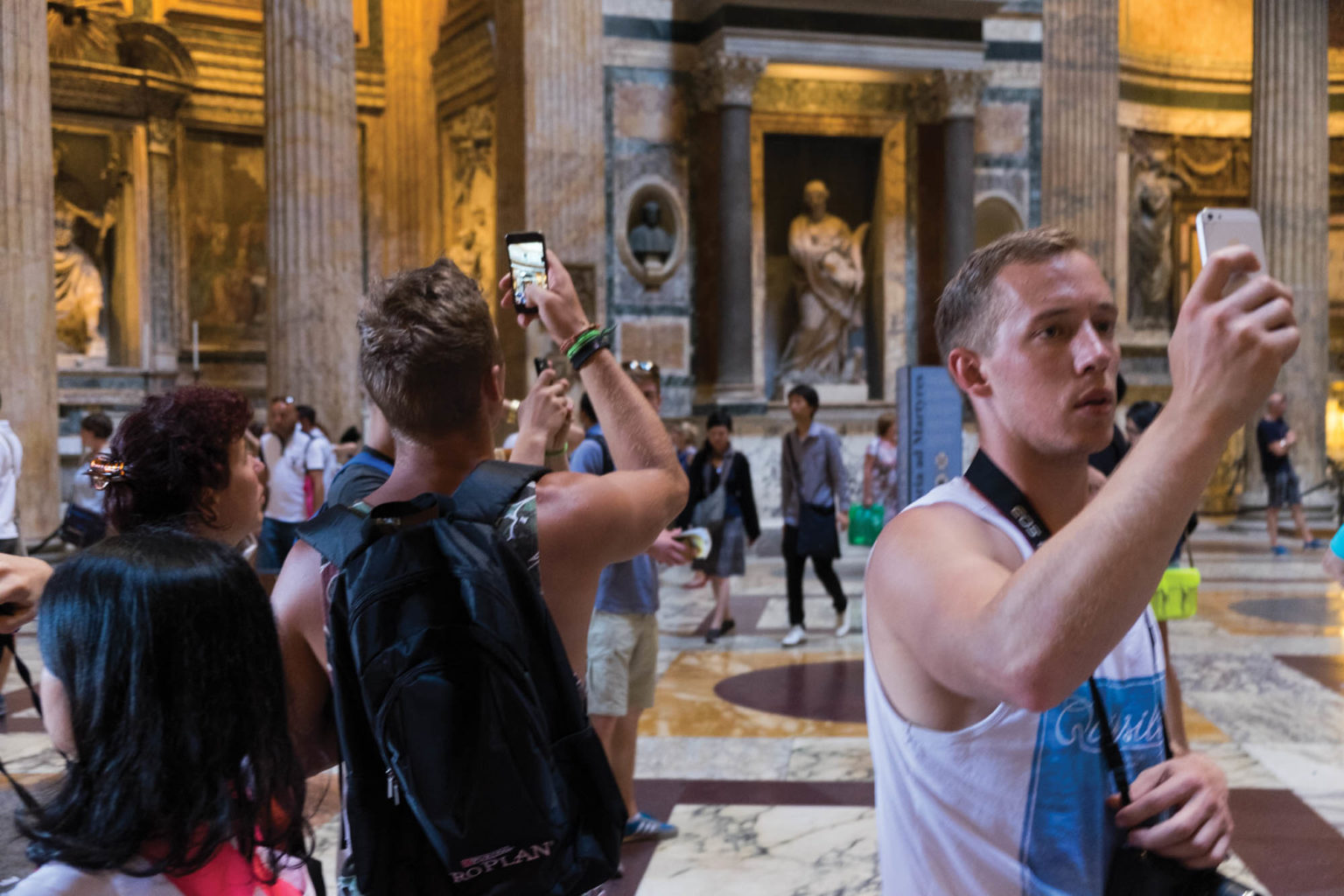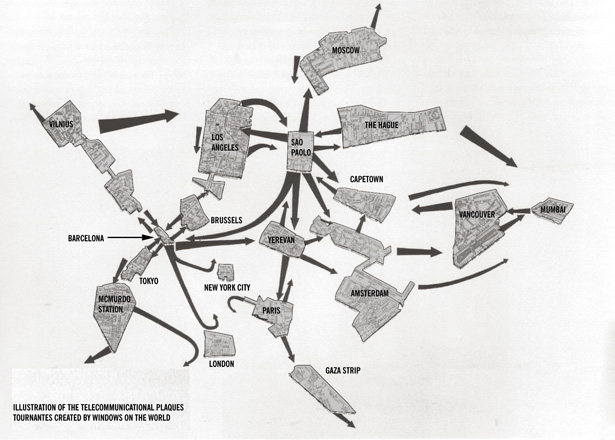
This is a personal reflection. I’m not sure anybody else on Earth feels this way, but if you do, or if you have found ways to keep travel alive for yourself, do leave me a note.
I don’t understand the point of tourism anymore.
Call it the existential problem of tourism. Whether Mickey Mouse hat and fanny pack wearing tourist or avant-garde academic, we would leave home to find stimulus in the unfamiliar. But how does that apply today anymore?
Overtourism together with the migration of merchandising and social behavior to online venues has undone difference between places. Will an Irish pub in Ireland be better than an Irish pub in a random town in the US? I’ve been to dozens upon dozens of Irish pubs in Ireland on my many Hibernian trips and quite a few in the US and it’s not clear. If I go into a random restaurant in Rome, will the person next to me be a Roman, an American, or a German?
Residents of city centers worldwide have left in favor of short term rentals and with them, stores have left to be replaced by tourist restaurants and tsotchke vendors. Rents have generally skyrocketed as well. I have observed that the quality of restaurants peaked around 2000, maybe a little after that. It may that when one is young the world is new, but just as much, I suspect, rising rents have priced out quality. If you have to spend your money on rent, how much is there to spend on good labor or on good ingredients? Rising rents have squashed not only innovation, but also old classics. Ideally, a city would have a balance of both. Energetic young bars and restaurants are easy to admire, and it’s easy to say that old bars and restaurants are stuffy and boring, but old they also have distinct character, full of the memories of the city, often providing an experience of going back in time like in Madrid’s La Venencia. That’s hard to do now and La Venencia is one of the few places to guard its status carefully.*
I suppose I was lucky when I travelled in my academic career. As a historian of architecture and network culture, I usually had an excuse to go somewhere: Istanbul, Rotterdam, Valparaiso (Chile), Stockholm, Knoxville, Berlin, Madrid, Auckland, Munich, New Orleans and on and on. Generally, I’d be going somewhere because I’d be delivering a lecture or teaching a course. This would often result in less than ideal conditions for tourism since it’d inevitably take place in the academic year and I’d only have a day or two before I had to head back to teach, sometimes less (I once went to Vancouver for 90 minutes, although in fairness I had already been there for a few days before). Sometimes I’d have specific works of architecture or urban conditions to see. But that too would bring up the central problem of tourism, which is that it is voyeuristic.
As my followers well know, unlike many contemporary academics, I don’t subscribe to the naïve notion that cultural appropriation is inherently bad. On the contrary, it’s at the very heart of the human condition and without it, we would not only be much poorer, much more xenophobic and racist, less likely to see the other side. That said, I find it uncomfortable to walk into a church these days, even the Vatican or the Duomo in Florence. Who are these people? Why are they practicing these strange, superstitious customs? It’s 2021. I went to a Catholic elementary school for a few years but my parents always stressed that they were European Catholics and didn’t practice. As time has worn on, I simply don’t understand them. A stone circle or a sacred altar from pagan Lithuania makes infinitely more sense. Similarly, I couldn’t bring myself to visit the Blue Mosque in Istanbul and I doubt I’ll go back to the Hagia Sofia when it becomes a mosque again. Going to see Buddhist temples only reinforces that most forms of Buddhism are incomprehensible to the largely twentieth century practice of Western Buddhism. It all seems very voyeuristic and as a practice voyeurism is only acceptable when it is a game played with an exhibitionist aware of their practices. Otherwise, it is uncomfortable at best and a form of violence at worst.
And what else does one do when abroad besides look at buildings? You can go see some museums, but a corollary to overtourism is that one has seen too much. There are too many museums today and most are disappointing. Even the storied ones in wealthy cities frequently disappoint. The lighting of Las Meninas at the Prado is a great example. It’s impossible to take in the painting because of the reflections on the surface. I’ve been to many museums in wealthy European cities and been really disappointed. American museums are no different. Going to MoMA is a horrible experience. The new Whitney is deeply unpleasant. These are not good places to see art. The modern and contemporary sections at the Art Institute of Chicago are tragic, victims of short-sighted decisions (notably the third-rate Edlis/Neeson collection which is inexplicably in public display for a stunning fifty years, at which point the whole thing can be properly binned). Dia: Beacon, which used to be one of the best museums in the world, has stumbled dramatically under recent curatorship: two shows of Charlotte Posenske’s oeuvre? One is by far enough. Sometimes I get lucky, the show of Constant’s work that I stumbled upon at the Reina Sofia was a stunning surprise. The Akron Museum of Art has a remarkable collection of postwar art, much more interesting that than at the Art Institute of Chicago. But I find such experiences rarer these days as museums pander to the woke and their similarly privileged friends, oligarchs seeking to launder money.
So why tourism? Modern tourism dates itself back to the 18th century practice of the Grand Tour, when nobles and wealthy British men would go abroad to France and Italy as a rite of passage during which they would radically unsettle their sensorium by seeing cultures quite unlike theirs, together with the great works from the Roman era to the Baroque. The idea was that embodied knowledge was even more important than book knowledge. But what to make of it now? Can one really be invigorated by travel in such a manner except maybe by, as has become the vogue lately, flying into orbit around the Earth? There is no question I would do that, but the cost of space travel is still ridiculously high.
Visiting natural areas is no different. The “wild” places that provided the antidote to civilization have now been thoroughly trampled. Our state parks are full of botanical escapees from home gardens. The selfie stick is as hard to avoid in front of Yosemite Falls as it is in the Colosseum. I suppose that gardens and botanical centers are still worth going to, but I am not terribly interested in formal ones or ones driven by landscaper architecture as they remind me of the damage we have done to the environment.

Can one undo this with alternative spatial practices? I don’t think they are so productive anymore. Debord’s dérive, the “technique of urban passage through spatial ambiances” was meant as an antidote to both urban boredom and to the planned, scheduled tourism of the day, but take a dérive through the city today. Will you really feel that different in Brooklyn or Manhattan? In Queens? I don’t think so. It’s all more of the same. Behind the windows are people watching the same Netflix shows you are.
Mind you, there are places of genuine difference these days, but should we really travel to them? I mean COVID aside, which makes it virtually impossible to travel to Asia these days, do the Japanese really want Americans or Europeans there anymore? They are much less interested in studying abroad these days. Do the Chinese? Rates of English language instruction are falling there. Afghanistan is certainly different, but it’s definitely not a good idea to go there.
COVID may change the nature of tourism. I dearly hope it does. The migration of jobs out of the city may free up space for residents to flock back in, or for more Airbnbs. Cities such as Venice, Amsterdam, and Rome are actively looking for more sustainable ways forward, culturally and ecologically. I certainly hope so. We all need it if we are to find actual meaning in travel again.
*The last time I was at La Venencia a tourist was literally shown the door for trying to order a beer. You’ll also be shown the door if you are dumb enough to try to take a selfie (there are signs on the wall about this), although this is as much resistance to tourism as it is a holdover from the Franco days when it was a Communist hangout and photos could mean the death of patrons.